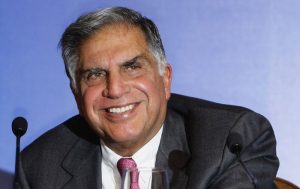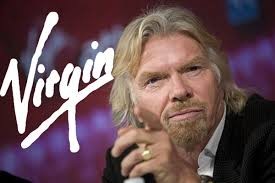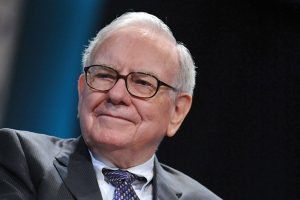Situational Leadership
Situational Leadership model is a popular model of leadership which is formed by Paul Hersey and Ken Blanchard; this leadership model is based on the idea that effective direction depends on leader’s ability to be flexible as per the requirement of a situation in the organization.
Situational leadership refers to the styles of leadership in an organization which leaders manage as per demand of a situation. They need to show lot of flexibility while managing challenging and difficult situations. They need to command, demand, inspire, prompt, mentor, guide, coach, sell ideas, take part, act, build, and sometimes even reprimand. Often the leadership style may change as per need of the hour. Following are four styles which are common.
James F. Parker, the Ex-Southwest Airlines CEO is a great example of telling & directing leadership. He has earned reputation for always putting the customer first, no matter what the situation. The September 11, 2001 tragedy led to an unmatched situation of forcing all airlines to shut down for days, which led to stranding passengers, pilots and flight attendants at airports across US. While other airlines sat and waited, Southwest employees took the passengers for bowling or to the movies to pass the time. The customer loyalty earned owing to this quick thinking, resourcefulness, and flexibility to make the most out of a bad situation helped Southwest’s popularity soar leaps and bounds. Parker also announced Southwest would not only retain all their employees but also start a profit sharing payment to employees just three days after 9/11, when other airlines were contemplating a 20 percent cut in staffing. Southwest handled the crisis much better than any other airline.
In telling and directing, the leader of the organization makes the decisions and informs others in the organization of the decision; this style of leadership also refers as micro-management because the leader is very involved himself in the crisis or situation and closely supervises the people who are working. The leader calls the shots by getting closely involved and his subordinates follow him with faith.
Effective leadership in change process is particularly important because the leader can make great effect during the organizational change process. The leader’s competencies such as emotional intelligence, integrity, drive, leadership motivation, self confidence, intelligence and knowledge of business are essential for effective leadership for transforming organization. Ratan Tata started his career as a chairman to Tata Group of Companies in 1991. He took charge from J.R.D. Tata. India was going through a period of economic reforms such as liberalization, privatization and globalization of business. The constantly changing business environment needed the business leaders like Ratan Tata first to manage the environmental change. Ratan Tata during the nation’s transitional phase led the Tata Group of Companies for 21 years and established Tata as a world brand. He used the various leadership styles such as transformational, transactional. He also used product orientation as well as people orientation concern – selling and coaching. He led the Tata Group with the qualities such as courage, creativity; risk bearing ability, social sense, sense of employee training and development and ultimately having a quality concern about the product. Leaders when they use the selling and coaching style of leadership get involved in the day-to-day activities as they are aware of critical inputs. However, input is requested from the employees before the decision is implemented. With this style of situational leadership, employees are still supervised but it is in more of a coaching manner rather than a management manner.
Virgin Airline’s Richard Branson’s informal style and unconventional attitude has earned him fame. His affinity to the hippie movement, particularly of the sixties, simply reflects his knack for being in tune with the feeling of the times. This is one of Branson’s greatest business attributes. This allows him to project the Virgin brand as a “cool” alternative. Besides, Branson is not motivated by money. Money may be a measure of his success, but for him the excitement is in the challenge. Virgin staffs are often paid a little less than market rates yet they are happy to work for Virgin because they enjoy being in the team. In this regard, I will like to draw your attention to the fact that when organizations struggle today on the employee retention issue for Virgin Airline loyal employees are their core competence. Losing skilled and experienced employees is the biggest loss to companies. Branson leads his organization with self-example; he tells his people to do “the impossible possible”. For Branson, the Virgin experience has been a magical mystery tour. That is the reason people can’t resist joining the Virgin adventure. It is a way of life than a job.
The participating and supporting style of situational leadership passes more responsibility to the employers or followers. While the leader still provides some direction, the decisions ultimately lie with the follower. The leader is there to provide feedback and to increase their confidence and motivation with praise and feedback for the tasks completed.
Delegating leadership requires appointing managers who are competent and do not need day-to-day supervision. Warren Buffett hires executives who are highly skilled and independent and then trusts them to perform. Within this environment, Buffett’s staff is self-assured and driven to achieve. They not only feel they are in charge; they do have full responsibility. Consequently, supervisors are motivated to reach their goals. Buffet believes in the abilities of his employees, but he does not keep that to himself. He communicates his trust and respect to the people he hires. If someone makes a mistake, Buffett often uses it as a learning experience and does not believe in penalizing the worker. Although he does not interfere with his executives’ functions, Buffett is accessible and willing to advice, if he is sought out. He is open and honest in his interpersonal dealings and is willing to acknowledge his own mistakes. Buffet is approachable, because he projects a mixture of modesty, confidence and appreciation.
Delegating is the situational leadership style where the leader is involved the least amount with the employees. The employees are responsible for choosing the tasks and the directions they will take. Although the leader may still be involved for direction or feedback purposes, it is on a much lower level than with other situational leadership styles. With this style of leadership, the employees know their role and perform it with little supervision required.
Conclusion: The Situational Leadership Model suggests that there is no sure-shot solution or “one size fits all” approach to leadership. Depending on the situation, varying styles of leadership is required. However, leaders must first identify their most important tasks or priorities. Second, leaders must consider the readiness level of their followers by analyzing the group’s ability and readiness. Depending on the level of these variables, leaders must apply the most appropriate leadership style to fit the given situation. Change is pertinent and each change brings along with it different challenges. Leaders are supposed to grasp the situation and use relevant keys to solve problems.

















































